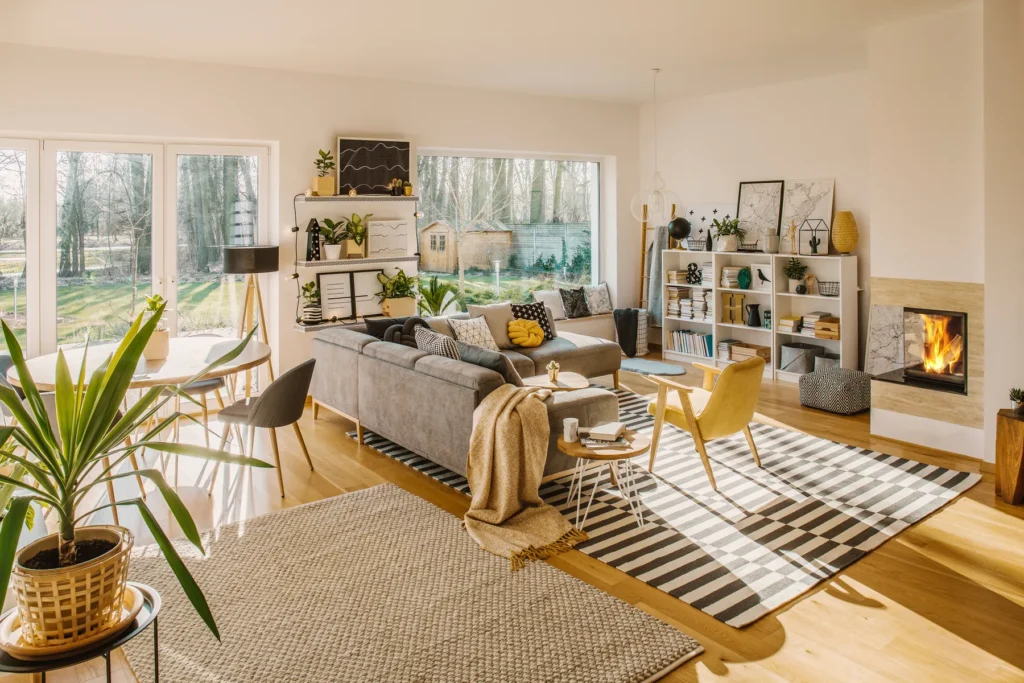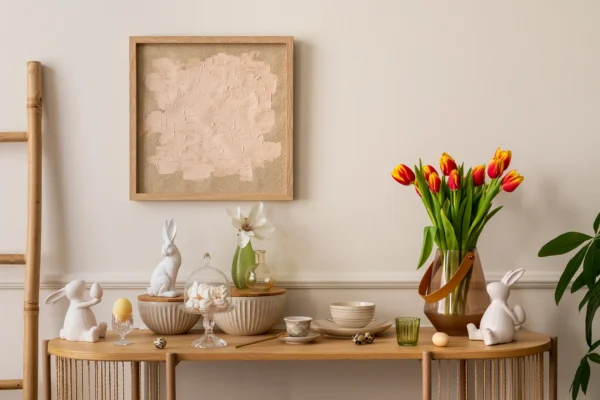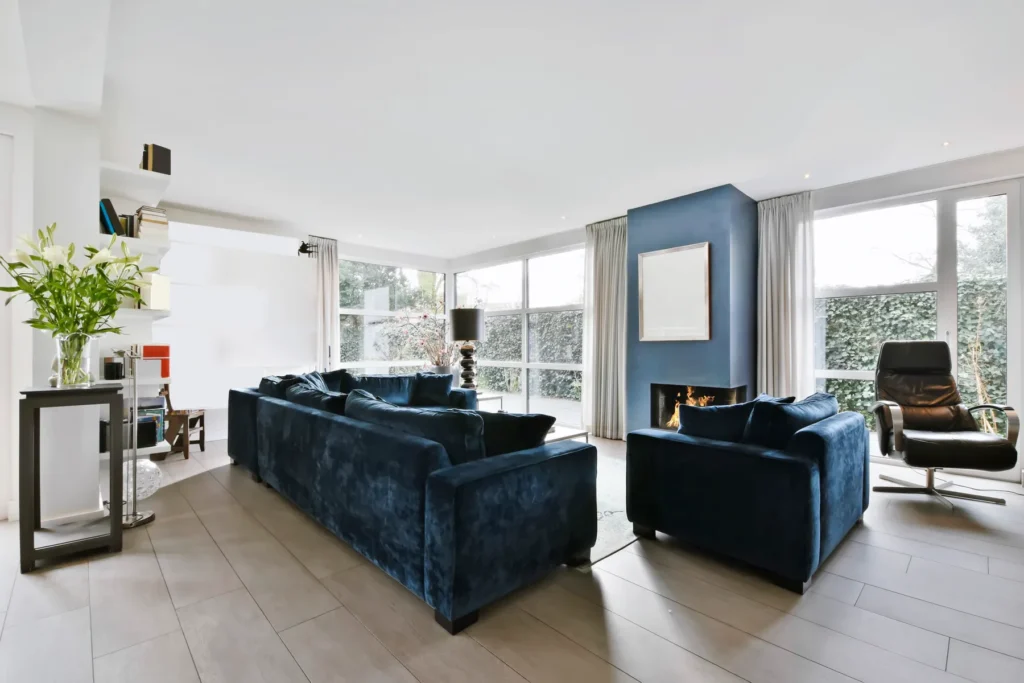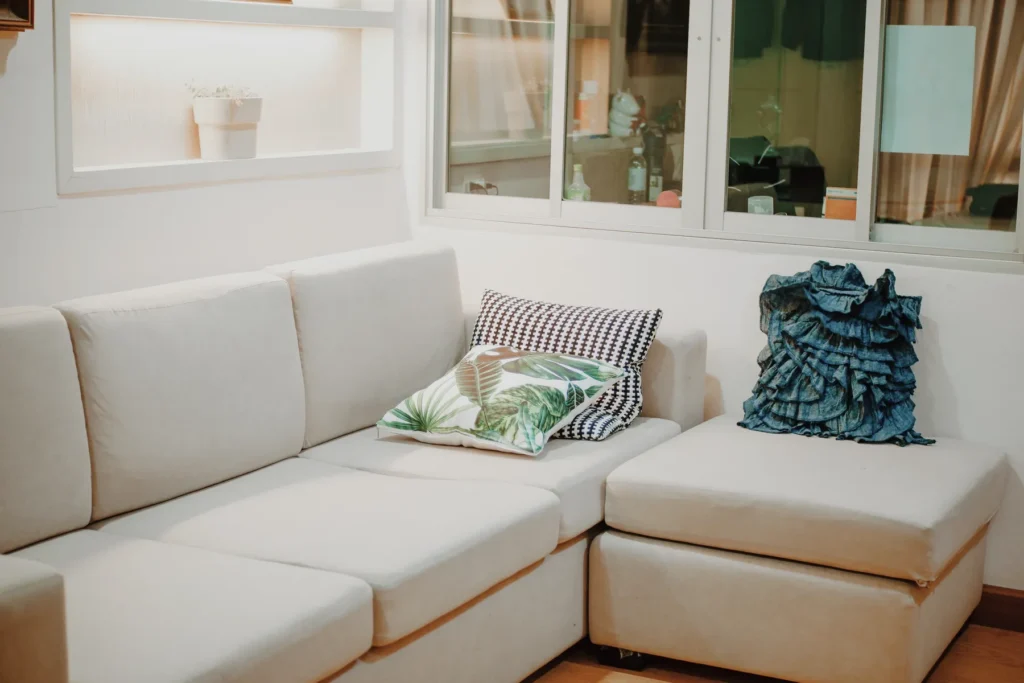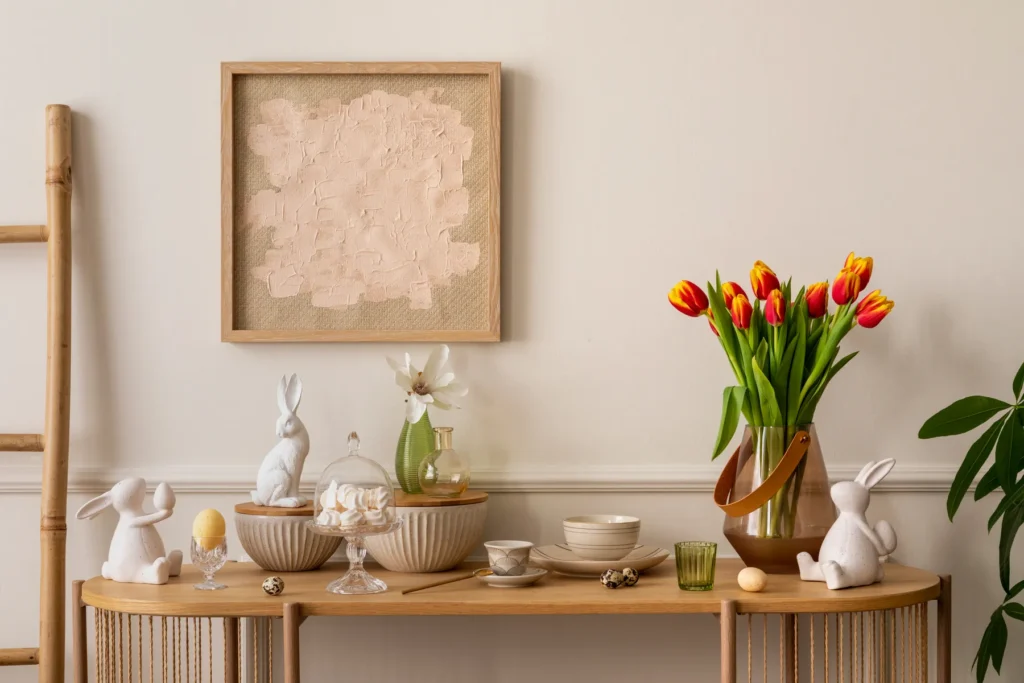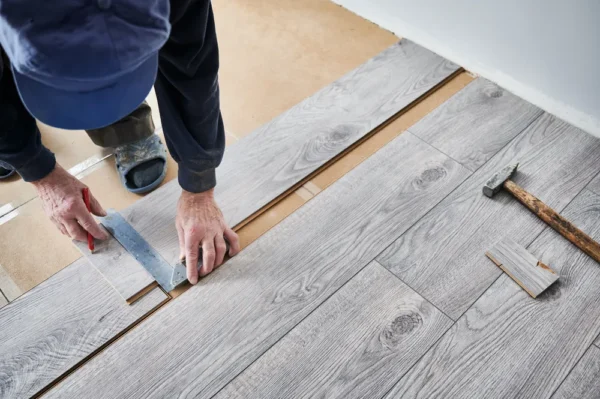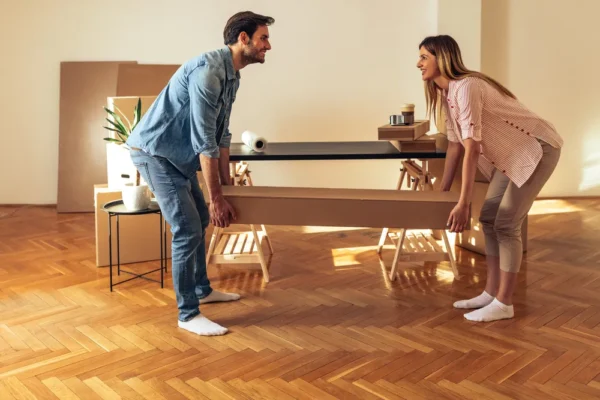Introduction
Open floor plans are becoming increasingly popular in modern architecture because they provide space, connectivity, and freedom. In these large floor plans, separating the living and dining rooms is essential. This helps the homework better and makes it easier to move around. It also enables you to know what each room is for. In this guide, we will look at the How to Separate Living Room and Dining Room?, and learn how it can be performed in a expert ways.
How to Decorate a Buffet Table in Dining Room?
Importance of Creating Distinct Zones for Functionality and Aesthetic Appeal
Unique zones in an open floor design are essential for functionality and aesthetics. It simplifies navigation and space use by clearly defining activities. Each room can have its style and mood, creating a cohesive but visually appealing interior design plan. Homeowners can make an open floor design practical and beautiful by separating living and dining rooms.
Assessing Your Space
Evaluating the Layout and Size of the Living and Dining Areas
Assess the size and layout of your open floor plan living and dining areas. Measure space dimensions to determine square footage and form. Consider how the spaces relate to each other and other home areas. Note architectural features like windows, doors, and columns that may affect layout and design.
Read more exciting blogs about DIY Craft Projects and Tutorials, Crafty Solutionz.
Considering Architectural Features and Existing Furniture Placement
Check the living and dining rooms’ architecture and furniture layout. Assess how these elements and furniture configurations affect space flow and functionality. Check for any alterations to optimize the arrangement and separate living and dining areas. Consider your existing furniture’s style and design aesthetic to achieve space cohesiveness.
Functional Separation Methods
Furniture Arrangement:
Putting items in different places to make visual and physical separation.
- Tips for Choosing Appropriate Furniture Pieces:
- Choose furniture that can be used for more than one thing, like a sofa with a low back that lets people see each other from the living and dining rooms.
- To separate rooms, use furniture that can do more than one thing, like a bookshelf or center table.
- Pick pieces that fit the room’s size and style and give you enough space to sit and store things.
- Arranging Furniture Effectively:
- Place more significant pieces of furniture, like sofas and eating tables, to define the edges and anchor each space.
- Using area rugs, you can make sitting and dining areas stand out more in an open space.
- Set up the furniture to make the space more accessible to move around and see but keep the visible separation between zones.
Area Rugs:
Putting down rugs to make different places in an open space.
- Selecting the Right Size, Shape, and Style of Rugs:
- Select rugs that are the right size for each room to create a balanced and well-balanced look.
- When choosing a rug shape, consider the room’s shape and where the furniture will go. For example, rectangular rugs are suitable for dining areas, and circle rugs are good for living rooms.
- Choose rug styles that go with the room’s general style, whether modern, traditional, or a mix of styles.
Divider Screens and Curtains:
Incorporating decorative screens or curtains to partition the space.
- Creative Ideas for DIY Dividers and Curtain Installations:
- Divide the space with decorative folding screens or room dividers made of metal, cloth, wood, or other materials.
- Hang curtain rods from the ceiling to the floor and hang light curtains or sheer panels to split the room visually while letting light in.
- Try do-it-yourself projects like hanging fabric drapes or bamboo blinds to give the room more texture and visual interest while separating the living room from the dining room and giving you privacy.

Visual Separation Techniques
Color Scheme:
- Implementing Different Color Schemes:
- To separate the living and dining areas, pick color schemes that are different from each other. For instance, you might choose warmer, earthier colors for the living room and more excellent colors for the eating room.
- You could use accent colors or color palettes that go well together to connect the two places while keeping their visual separation.
- Tips for Coordinating Colors:
- Choose colors that look good together and work well together in the room. Use color charts or online tools to ensure the colors go together.
- Include things that are the same color family or have similar tones to keep the design cohesive.
Accent Walls and Wallpaper:
- Creating Focal Points:
- Set up feature walls or areas with wallpaper to draw attention to specific areas and make them stand out. Consider using different colors or patterns on the walls of the living room and the eating room.
- Choose wallpaper with big prints, different textures, or geometric shapes. To make the room look more exciting and clear
- Exploring Various Design Ideas:
- Try out different patterns and design ideas to make the space between the living and eating rooms stand out. For example, you could use striped wallpaper or a painting that goes across both zones.
- Use scale and proportion to make a look that is balanced, pleasing to the eye, and fits in with the room’s general style.
Lighting Strategies:
- Using Lighting Fixtures Strategically:
- Place the lighting sources so that each part of the open space stands out. Hanging pendant lights or chandeliers over the eating table can make it stand out and serve as a focal point.
- Put in wall lamps or recessed lighting in the living room to make the space stand out and provide general or specific lighting.
- Incorporating Pendant Lights, Chandeliers, or Floor Lamps:
- You can define each area of the room with pendant lights or chandeliers that can be adjusted in height. These lights will also add style and class to the room.
- Place floor lamps in the living and dining rooms to light up specific areas. This will create layers of light and improve the general mood.
Structural Solutions
Architectural Elements:
- Incorporating Architectural Features:
- Columns, arches, and half-walls are architectural elements that can naturally divide areas within an open floor plan. With these features, you can visually and physically separate the living room from the eating room.
- Add decorative finishes or molding that goes with the general design plan of the space to these architectural elements to make them look better.
- Discussing the Feasibility of Structural Changes:
- Considering structural changes, like adding new columns, removing or separating walls, and bettering rooms. Talk to a skilled worker or structural engineer to determine how safe the space is and if the changes you want to make are possible.
- How changes to the structure might affect the space’s general layout and how it works. This includes things like load-bearing walls, electrical wiring, and plumbing.
Built-in Shelving and Cabinetry:
- Installing Built-in Shelves or Cabinets:
- Build-in shelves or cabinets can separate the living room from the dining room. Built-in features like these can be used for storage and separating and defining each area in an open floor plan.
- Make changes to built-in cabinets or shelves to fit the space’s needs and style choices. Open shelves can be used to show off things, and hidden storage can help keep things looking clean.
- Maximizing Storage While Adding Visual Interest:
- Floor-to-ceiling built-in shelving or cupboards in the living and dining spaces enable you to store more. This provides plenty of space for books, decorations, and dishes, enhancing the room’s appearance and building detail.
- By adding adjustable shelves, built-in lights, or media centers, built-in shelves or cabinets become more usable. This makes the built-in pieces seem good as room dividers and more functional.
Creative Design Ideas
Room Dividers:
Flexible room dividers can divide living and dining rooms in an open floor design. Traditional folding screens, modern shelf units, and hanging walls are available. A decorative folding screen with elaborate patterns or natural materials separates the two zones and provides visual appeal.
Consider sliding or barn doors that can be opened or closed to flow between spaces. For a minimalist look, choose sheer or beaded drapes that let light in but provide seclusion and division. Room dividers allow you to add flair and functionality while retaining the open floor plan, regardless of style.
Multi-functional Furniture:
Multi-functional furniture maximizes space and functionality in open floor plans. A dining table with storage or a sofa with a pull-out bed are good choices. Consider buying a coffee table that raises to dining height or a modular sectional sofa that can be modified to fit different seating arrangements.
Nesting tables or ottomans with hidden storage maximizes surface area and reduces clutter in smaller rooms. Choose multi-functional furniture to increase the usability of your living and eating areas while retaining a fashionable look.
Conclusion
In conclusion, an open floor design must effectively separate living and dining rooms for functionality and aesthetics. Homeowners can create zones using furniture arrangements, area rugs, and structural components while keeping coherence and flow. Experimenting with design concepts lets you personalize and customize each room to fit your lifestyle and interests.
We advise readers to try different separation methods to find the best for their environment. Room dividers, multi-functional furniture, and innovative lighting can distinguish living and dining zones in an open floor plan.
Finally, I invite readers to contribute their open floor plan zone creation experiences and design advice. By sharing ideas and thoughts, we can inspire and encourage each other to build beautiful and functional living spaces that reflect our interests and lifestyles. Let’s keep exploring open floor plan design and make our houses inspiring and delightful.

